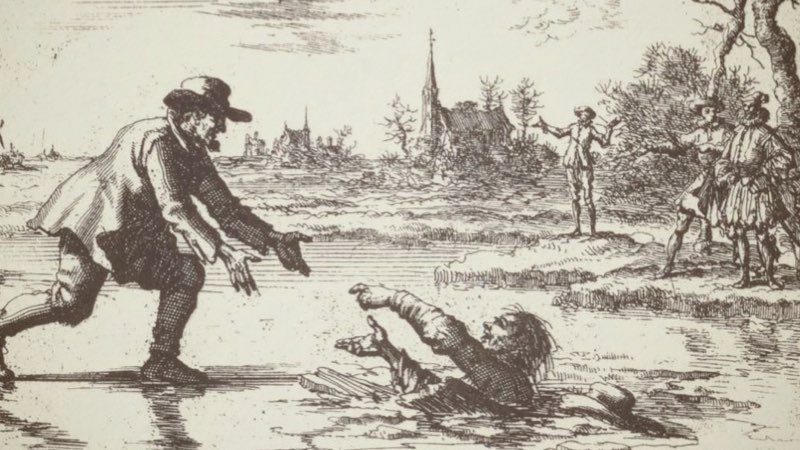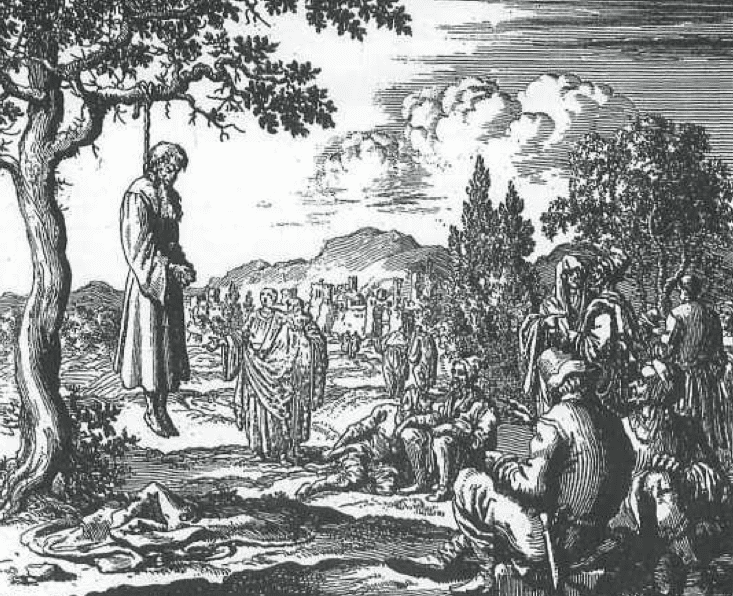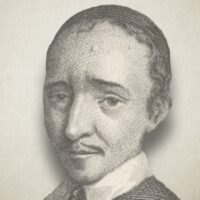
44. Luke the Evangelist
Of The Second Persecution Of The Christians, Under Domitian, Which Commenced A.D. 93; In Which, Among Others, There Were Apprehended, Banished, Or Slain, The Following Persons.”
Luke the Evangelist Hung from an Olive Tree in Greece, A.D. 93
Luke, The Holy Evangelist, Hanged On A Green Olive Tree, In Greece, A.D. 93
Luke, the third among the holy evangelists, was, according to the testimony of the ancients, a Syrian of Antioch, and by occupation a physician. Bybclsch Nozmbceck, about Luke, from Euseb. and Hicron. Col. 4:14.
It was the will of the Lord to use him as a physician of souls; to which end he has left to mankind two excellent books on spiritual medicine; namely, his holy Gospel and the Acts of the holy Apostles.
Concerning his parents there is nowhere anything mentioned; hence little or almost no account can be given of his natural descent, excepting his birthplace, and that he descended from the Syrian nation. It is supposed that he had no wife; though nearly all the other apostles and evangelists were married.
According to the opinion of Jerome, he was, before his conversion, a Jewish proselyte, though of Gentile descent; which is quite probable, since, according to the judgment of linguists, his style is far more excellent and perfect in Greek than in Hebrew. Joh. Gys., in Hist. Mart, ex Hieronimo. He afterwards, through the preaching of Paul, became a Christian A.D. 38, after he had come from Thebes to Antioch. Konst-tooneel, etc., in the life of Luke.
He became a disciple of the apostles, but especially a traveling companion of the apostle Paul, so that he was with him in many perils and difficulties on sea and on land.
He was so intimate with Paul, and his special friend to such a degree that, according to the ancients, he wrote the Gospel under his dictation and instruction. He had also given a faithful account of Paul’s principal travels until his first imprisonment at Rome. Joh. Gys. Hist. Mart., concerning Lake the evangelist.
Paul makes frequent mention of him in his epistles; for to the Colossians he writes: “Luke, the physician, . . . greet you” (Col. 4:14). To Philemon: “There salute thee Epaphras, my fellow prisoner in Christ Jesus; Marcus, Aristarchus, Demas, Lucas, my fellowlabourers” (Philem. 23, 24). Likewise, to Timothy: “Only Luke is with me” (2 Tim. 4:11).
Luke was therefore, as it appears, a companion of Paul, not only in his travels, but also during his imprisonment at Rome. So that he was twice brought, together with Paul, before the Emperor Nero. P. J. Tzvisch, taken from Paul’s epistles to Timothy.
Respecting his end, some write that, while preaching in Greece, he was hanged by the ungodly to a green olive tree; others relate that he was in the eighty-fourth year of his age, at the time of his death. Bybelsch Ncemb&ch, letter L., on the name Luke, fol. 624, col. 1, Konst-tooneel van vcertig.
Thieleman J. Van Braght (1625-1664) was an Anabaptist who is best known for writing a history of the Christian witness throughout the centuries entitled “The Bloody Theater or Martyrs Mirror of the Defenseless Christians who baptized only upon confession of faith, and who suffered and died for the testimony of Jesus, their Saviour, from the time of Christ to the year A.D. 1660” (1660).
Thieleman J. Van Braght, Martyrs Mirror




